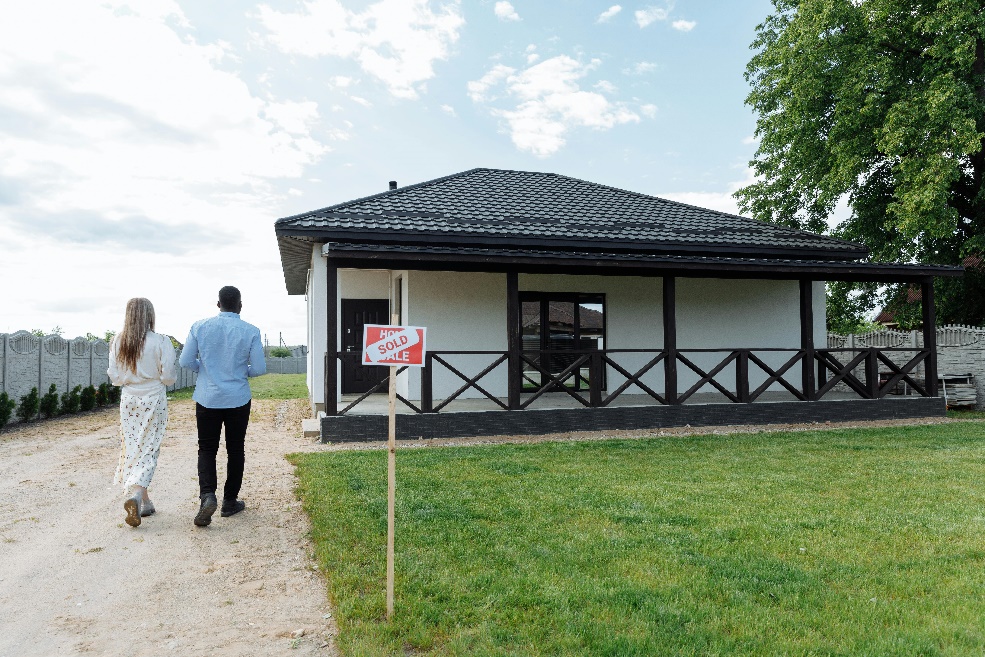Knowing the different property ownership types is important, especially for home buyers in New Zealand. Find out why in this article

Updated 29 May 2024
There are many property ownership types in New Zealand, and they all follow certain rules and regulations. For homeowners, this means varying restrictions and rights to the land they own. Aside from that, understanding the benefits together with the drawbacks of each type is vital in buying and selling properties.
In this article, NZ Adviser will discuss four of the main property ownership types in New Zealand. We will tackle how they can affect what owners can and cannot do with the property. We will also explore other essential matters such as Māori land ownership and the laws affecting it.
If you are a real estate professional, you might want to share this with your current and potential clients. This can help them understand the different property ownership types and where they fall under if they are already property owners.
Different property ownership types in New Zealand
There are four main types of property ownership in New Zealand:
- freehold
- unit title
- leasehold
- cross lease
The most common type of property ownership in New Zealand is freehold. This means owning the entirety of the property, its fruits (if any), and other structures on it.
Let's discuss what it means to be a freehold landowner as well as the other property ownership types:
1. Freehold
Aside from being the most common property ownership type, freehold is also the simplest. Purchasing a freehold property, also referred to as fee simple, gives homebuyers absolute ownership of the land and anything built on the land. As such, having a freehold title gives owners a certain level of freedom when it comes to renovating their properties. This means that they do not need their neighbour’s approval when upgrading or extending their homes, although council permission may be required for major modifications.
There are also other factors that may have an impact on property ownership such as:
- easements that grant other property owners certain rights over a portion of the property
- utility service providers access to the land including right of way or service connectors
- covenants prohibiting certain types of structures that can be constructed in the property
There are also restrictions under the Resource Management Act of 1991, which prevent any person from using land in a way that contravenes a national environmental standard, regional rule or district rule. Some limitations likewise apply if the land is considered as Māori freehold land.

2. Unit title
Also known as strata title, stratum estate, or stratum in freehold, unit title ownership is common in multi-unit developments such as apartment buildings and townhouses. This grants home buyers sole ownership of their units and shared ownership of common areas, including driveways, lifts, and lobbies.
Property owners also automatically become members of the body corporate, a group that comprises all the unit owners within a unit titled property. The body corporate holds ownership of the land for the benefit of the unit title holders, which is the reason why unit owners do not need to pay ground rent or a lease fee for the land.
However, owners must pay an annual fee or levy to cover the management and maintenance of common areas and building insurance.
There have been some changes to the unit title property ownership following amendments to the Unit Titles Act. These new regulations:
- require a wider range of information to be provided to prospective buyers and provides additional rights to buyers if these requirements are not met
- strengthen governance arrangements in relation to a body corporate
- raise professional standards for body corporate managers, and introduces a code of conduct
- ensure adequate planning of long-term maintenance projects
- introduce new dispute resolution rules and fees
- allow for bigger flexibility as per charges to unit owners and utility interests
- give new powers to the regulator to improve compliance
Watch this video to find out more about the changes in unit title ownership:
3. Leasehold
Buyers of properties with a leasehold title are granted ownership of the house but not the land that it sits on. This means they need to pay annual rent, also called ground rent or a lease fee, to the person who owns the land, also referred to as the freeholder.
Leasehold property owners are given the exclusive right to live on the land and the structures on it for a specific period, which can last years, decades, or even centuries, depending on the terms of the lease.
The leaseholder-freeholder contract sets out the rights and obligations of both parties, including how much the ground rent is, what can be built or renovated, who is responsible for specific repairs and maintenance, and rules on pets, noise levels, and use of the property.
Although leasehold properties generally have a lower purchase price, ground rents are reviewed at set periods and can increase substantially depending on how much the value of the land has risen.
4. Cross lease
Cross leases are common when there are multiple dwellings on a single piece of land. In this set up, homeowners share ownership of the land, and each party leases their properties from all owners.
A cross lease title generally comes with a flats plan, which contains the outline of an owner’s building. Any changes to a flats plan or building often requires the consent of the other owners and a new survey plan, making renovations an even costlier project.
For driveways and other common areas, repairs and maintenance are typically a shared responsibility.
Māori land ownership
This refers to the rights and limitations of New Zealand’s Indigenous Polynesian people known as the Māori on real estate transactions such as buying and selling of properties, transfer of ownership, etc.

There are specific laws and customs pertaining to Māori land ownership. These laws protect the practices and customs of the Māori as property owners - and it has been a struggle for them.
Māori land ownership also has a unique status when given to a Māori property owner. Below are some of its key aspects:
Customary ownership
Since the Māori are native to New Zealand, customary rights and ancestral connections to the land are the roots of their land ownership. This is based on the principle that land is a taonga (treasure) and it signifies cultural and spiritual values to Māori. Economic benefits can also be included.
Māori Land Court
The Te Kooti Whenua Māori or Māori Land Court (MLC) is a specialised court that decides on cases involving Māori ownership of properties. In turn, the MLC has jurisdiction over land status, ownership disputes, succession, and other matters concerning Māori land.
Communal ownership
Māori land can be held collectively by a group or tribe (iwi, hapu, or whanau) rather than individual ownership. This communal ownership ensures that the land remains under the control and stewardship of the wider Māori community.
Incorporation of Māori land
Māori landowners can also legally incorporate their properties. This means that Māori landowners will have the right to manage and develop their properties for their benefit. The structure of a Māori incorporation functions the same as a company. Facilitating and promoting the use and administration of Māori freehold land on behalf of the owners is the objective of incorporating Māori properties.
If a Māori landowner decides to incorporate their property, any type of land, not just Māori freehold, can be acquired.
Cultural considerations
Māori land ownership is intricately linked to Māori culture, customs, and protocols. The principles of kaitiakitanga (guardianship) and mana whenua (authority over ancestral lands) guide the relationship between Māori and their land.
Laws affecting Māori land
Below are some enacted laws that affected Māori Land ownership:
- Native Land Act 1862 and 1865. Native Land Court was established and introduced individual land titles to replace customary communal titles.
- New Zealand Settlements Act 1863. This law stated that the land of any tribe ‘engaged in rebellion’ against the New Zealand government could be confiscated.
- Native Lands Rating Act 1882. This law introduced rates on Māori land and allowed for land to be seized if rates were not paid.
- Public Works Act 1864. After the implementation of this law, Māori land could be taken for government projects such as roads.
- Native Land Act 1909. The Native Land Act 1909 prevented the Crown from buying Māori land unless all owners have agreed to accept the offer.
- Native Trustee Act. The enactment of this law established the Native Trustee and Native Trustee Office. This aims to help Māori better manage remaining land.
- Treaty of Waitangi Amendment Act. This enabled the Tribunal to investigate claims dating back to 1840, when the Treaty was signed.
- Te Ture Whenua Māori Act. For the first time, the importance of the relationship of land to Māori and the need to promote land retention was legally acknowledged due to this law.
Governance structures for Māori Land ownership
Since a Māori property can belong to many owners, appointing a group of people to govern it and make decisions on their behalf is beneficial. Māori Land ownership has various governance structures, including:
- ahu whenua (land management trust)
- Māori incorporations
- reservations, for areas like marae (open spaces), fishing grounds or urupā (burial grounds)
Knowing your property ownership type
Knowing your property ownership type is crucial because it dictates how the property will be transferred to your descendants if you wish to keep it for life. As such, this is critical for estate planning and making sure that your property is passed on to your intended heir. It sets the expectations for your future endeavours regarding the property. Whether you want to sell it or rent it out depends on such information.
Your property ownership type determines your rights, privileges, and limitations. Understanding your property title allows you to fully exercise these rights and helps you meet your obligations to the property itself and to the community.
Do you own property in New Zealand? Are you aware of your property ownership type? Share your thoughts below.



